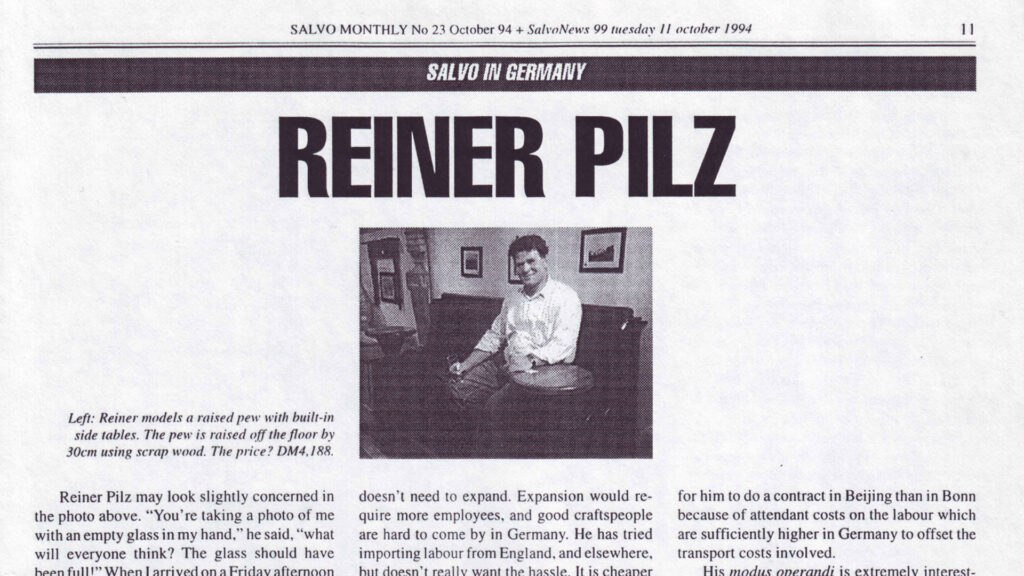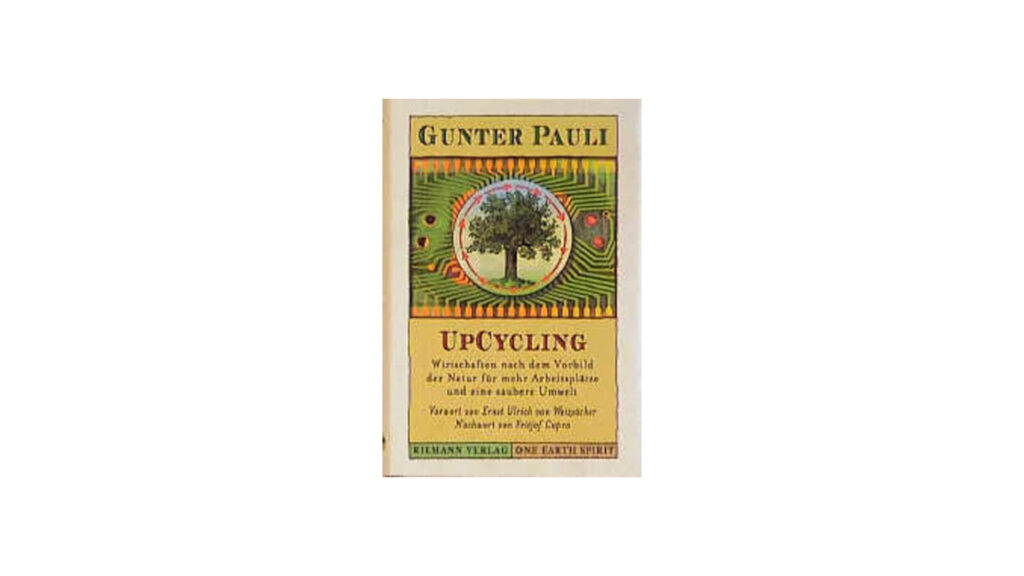Do you know what upcycling is, when it was born and how to put it into practice? If not, come and learn what this unique and innovative concept of upcycling and sustainability is all about!
Upcycling, an example of rebirth and second chances
Did you know that single-use plastics make up 50% of all plastics produced each year? According to warnings issued by major organisations such as the Universidad Autónoma de Guadalajara in Mexico, it is estimated that around 8 million tonnes of plastic end up in the ocean every year, which means that there will be more plastic than fish in the sea by 2050.
Given this terrible and discouraging prospect, many voices have been raised to stress the importance of finding effective and efficient alternatives to help reduce pollution. A dangerous toxicity that is currently rampant in our soils, seas and atmosphere.
And it is in this context of resolution and salvation that sustainability and super recycling are born. Offering itself as a possible solution to solve the serious environmental problem of overproduction and overexploitation of resources.
What is Upcycling?
Rescue, repair, regenerate and reuse. Such is the essence of upcycling in reality; an authentic and transformative market term, where waste and squandering have no place. Where recycling, or rather upcycling, is the hallmark of its identity.
Also known as “upcyclen”. Translated into Spanish as “suprarreciclaje”. It is a relatively new concept, which encompasses in its definition. Taking an old and used object and subjecting it to various processes of change and design and regeneration. The objective? To modify its initial appearance until it has a second useful and practical life, looking new and different. All this without having to undergo any industrial modification.
A mixture and combination where old and worn materials are added and fused with other components already used, until the final result is a totally new product, with a different design and even more value than it had in its original form. Interesting, isn’t it?
Another use and another life
It can be said, therefore, that upcycling consists of taking those materials or elements already used, immersing them in the forge of creativity, moulding them again with originality, until finally readapting and reusing them and giving them another new and equally useful life. It is, in essence, rescuing and using those items or objects that usually end up in the trash. But instead of saying goodbye to them, here it is giving them another use and another life. And in doing so, contribute to not adding to the lifelong mountain of waste that already crushes the planet.
The basic idea behind all regenerated objects such as upcyclin is to ensure that the rescued and redesigned product is in circulation for as long as possible, a concept that seeks to put an end to society’s consumerist attitude. A concept that seeks to put an end to society’s consumerist attitude, basically, with clothing being a clear example of this excessive consumption, and why? Because many of them are designed to be used for a short period of time. This in turn causes a large part of this textile to end up forgotten and wasted in landfills.
The history of upcycling: from Reiner Pilz to Christopher Brosse
It was in 1994 that this terminology first emerged. In October of the same year, Reiner Pilz published an article in the English magazine Salvo about specialised architecture and how this construction profession paradoxically contributed to deconstructing the ecosystem. For this German-born engineer, recycling was nothing more than under-recycling.
“They destroy bricks, they destroy everything,” he charged, in an article discussing architecture to achieve a greener future. “What we need is ‘upcycling’, where old products are given more value, not less”. In his view, his newly coined upcycling therefore responded to the need to revalue waste, first and foremost. By outlining and modulating with them and subsequently higher quality end products.

Complex and multifactorial
It can be said that upcycling is under development and construction. For if it was Reiner Pilz who planted the first seed, it was the Belgian entrepreneur Gunter Pauli who watered the terminology and deepened its roots through his book “Upcycling”, published in 1999, later writing “The Blue Economy”.
A tree of new concepts whose fruits would later be harvested by both William McDonough and Michael Braungart, in their 2002 volume “Cradle to Cradle: Remaking the Way We Make Things”, a work known in Spanish as “De la cuna a la cuna. Rediseñando la forma en que hacemos las cosas”.
However, it is enough to take a look at its history to see that in recent years it has been combining in its identification characteristics and qualities that encompass it within the so-called circular economy, where the values of the materials shine for their economic advantages, yes, but also ecological. In fact, so much has been its growth and interest in this last period, that since 2009 it has been leaving a trail of research in different areas. As this study by Kyungeun Sung, PhD, a member of the School of Design at De Montfort University, reveals. Located in Leicester, UK.
We are talking about essays dressed up as academic articles, whose subjects range from art and design, to architecture and business, to fashion and textiles and, of course, to engineering and environmental studies.

There is no such thing as rubbish
Costa Rican expert Christopher Brosse, author of “La basura no existe. Towards super-recycling and the circular economy”. In simple, direct and accessible language, this book guides its readers towards innovative methods that respond to both regenerative design and the circular economy.
Brosse’s lines argue, in fact, that it is possible to live without making waste, just as it is possible to design services and even products. And not only do they affirm it, they also advise how and even verify it with tests, thus creating a tool for help and learning. After all, for this expert, waste is nothing more than a concept. A concept that mutates and transforms; a basic reason why, in his eyes, it does not even exist, directly.
The main requirement to enjoy all this compendium of research and essay and to take advantage of these teachings of relearning and recycling renewal? A creative mind, a curiosity for the “Upcycling label” and, of course, an interest in sustainability.
What is the goal?
The ultimate goal pursued by all these renowned essayist authors, lovers of this regenerative practice? To help people relearn how to use. Incite them to understand, in essence, how upcycling brings together tables and possibilities to become the production method of all things. For the future, it is understandable, not least because of its link to the so-called circular economy. And why exactly?
Because of the integral background that, in conclusion, defines the Circular Economy. If there is one thing all these experts have in common, it is their support and belief that sustainability begins with recycling, first and foremost. And it continues in a super-recycling that involves the living environment itself. This requires, in short, a better relationship with the materials that surround us, in order to be able to offer a business proposal that is as innovative as it is completely circular.
Upcycling: a rescue of elements and objects that goes one step further than traditional recycling
To say that super-recycling has to do with the more classic and habitual recycling is as accurate as it is inaccurate. The concept is indeed aligned and twinned with that of recycling, especially if one takes into account that recycling is about reducing the consumption of resources, reducing the degradation of the planet, and also giving a new life to waste.
However, where classic recycling focuses on packaging and plastic waste, generally, as well as paper, glass and cardboard, of course, and subjects them to industrial processes for reuse, albeit less so), upcycling presents itself as a much healthier and more sustainable solution.
Where industrial recycling opts for melting, decomposing, altering and readjusting a material until a different product is obtained, upcycling focuses on manufacturing an object of greater value, using an already used item or simply only parts of it.
The similarity, then, between upcycling and recycling? They both advocate a circular model of use, recycling and reuse. The difference? That the former system consumes water, energy and chemicals, emitting toxic emissions along the way, in a process that does not leave the ecosystem unscathed, by the way, as it also harms it. The latter, on the other hand, does not need to undergo any industrial manufacturing process, which is why it is better, at least in terms of sustainability, and why it is considered a super-recycling, given that its procedural system does not pollute the environment any further.
Upcycling at home, a most rewarding practice
Although upcycling is a practice within the reach of governments and organisations, collectives and institutions, and can be carried out on an urban and even rural scale, whether or not it is for commercial purposes, it is fair to say that it can also be applied at an individual level.
It is also possible to practice upcycling on one’s own. As feasible as having imagination and materials. It means taking a piece of clothing that is no longer in use, first of all, dismantling and separating its fabrics and then reusing them in another garment, and then adding them as a design and complement to shoes, bookmarks, cases… Depending on the creativity of each person!
What’s more, did you know that upcycling, in fact, is also present in the renovation of home furnishings? Very true! But… In what way? It’s all about taking those broken, wasted and definitely old pieces of furniture and varnishing them with a layer of creativity and originality. And all for the modest price of sheer physical effort, will and energy, as such repairs and regenerations and transformations don’t usually require any extra cash outlay.
We have a broken wardrobe – better not to throw it away! Instead, it is better to salvage its shelves, for example, screw them to another old entrance door or even to a bathtub, for example, and design the whole thing as a decorative piece or as a footrest or shower bench, for example.

After all, upcycling is challenging, challenging and practicable. A great and real opportunity to change the way we consume and produce; a bet centred on the primacy of reducing the impact on the environment, which is already damaged enough as it is.
So… Are you going to miss it? On the contrary, join in!





